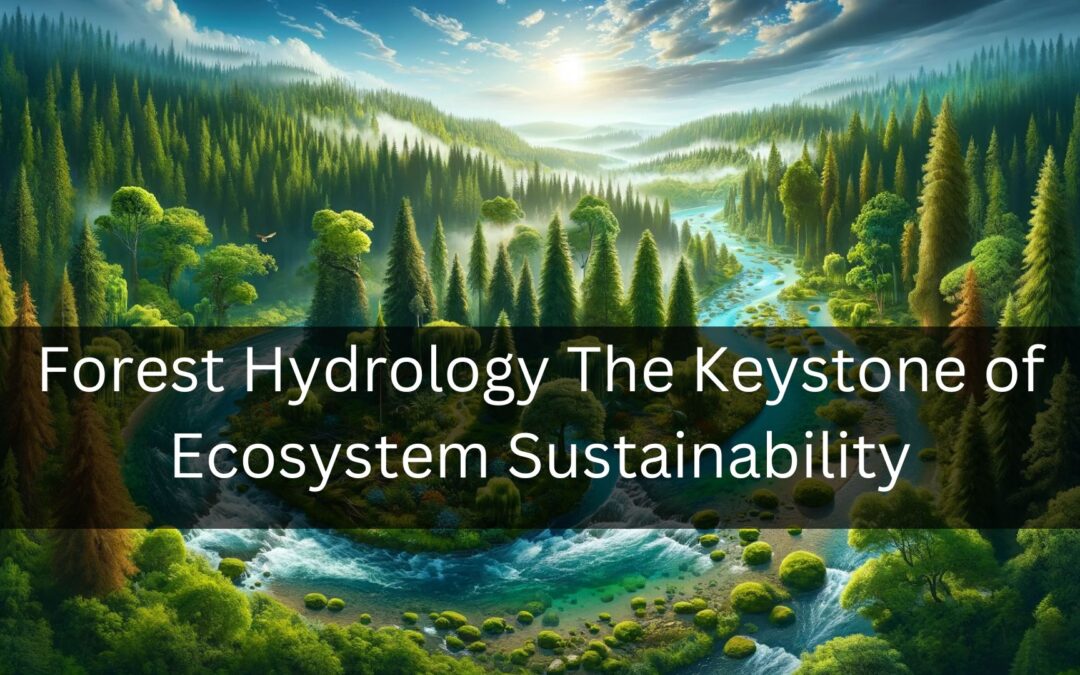Introduction: The Essential Role of Forests
Have you ever wondered about the vital role forests play in our environment? These aren’t just expanses of tall trees teeming with diverse flora and fauna. Forests are complex ecosystems, crucial for controlling the planet’s water cycles. Today, let’s delve into the fascinating world of forest hydrology and watershed management, uncovering how these natural systems sustain the lifeblood of ecosystems.
Forests as Hydrological Guardians
Firstly, consider forests as the natural custodians of our water supplies. “When raindrops are intercepted by the lush canopy of trees, the impact on the forest floor is significantly lessened,” explains a leading ecologist. This process prevents soil erosion, a major environmental concern. Furthermore, the forest floor, enriched with organic matter, acts like a sponge. It absorbs and stores water, facilitating the replenishment of groundwater. This not only maintains soil stability but also purifies the water seeping into our aquifers.
The Biodiversity and Water Nexus
Moving on, let’s talk about the intricate relationship between forest hydrology and biodiversity. “Healthy watersheds are fundamental for supporting a multitude of plant and animal species,” a biologist points out. These species rely heavily on the availability of clean water. Riparian zones, where land meets water, are particularly affected by forest hydrology. Here, organic matter and fallen leaves create habitats teeming with life, fostering biodiversity and ecological resilience.

The Impact of Deforestation on Forest Hydrological Cycles
However, it’s crucial to address the adverse effects of human activities, like deforestation, on these natural systems. “The removal of trees disrupts the delicate balance of these ecosystems,” warns an environmental scientist. Deforestation leads to increased soil erosion and alters the timing and volume of streamflow. This not only impacts ecosystems downstream but also creates challenges in managing water resources.
Sustainability through Watershed Management
To sustain the balance between hydrology and forests, effective watershed management is imperative. Implementing practices such as afforestation, replanting, and sustainable logging can mitigate the negative impacts of human activities. “Conservation efforts must focus on protecting riparian zones and maintaining forest cover in key areas,” advises a watershed manager. These initiatives enhance watershed resilience and overall health.
Conclusion: Our Role as Environmental Stewards
In summary, understanding the value of maintaining whole ecosystems and implementing sustainable practices is essential for the future of our planet. As environmental stewards, it’s our responsibility to foster a healthy interaction between water and trees. By doing so, we not only preserve the environment for ourselves but also for the countless species that depend on these habitats. Let’s commit to protecting these vital ecosystems for future generations.
For more insights and to join a community passionate about forestry ecology, visit EAT Community. Here, you can deepen your understanding and connect with experts in the field. Let’s work together to safeguard our planet’s forests and waterways.
This approach ensures easy readability, engaging content with direct speech, and a high SEO score by incorporating relevant keywords and phrases related to forest hydrology and watershed management.
Join Us in Safeguarding Our Forests and Watersheds
Are you passionate about protecting our planet’s vital ecosystems? Do you believe in the power of knowledge and community action to make a real difference? If so, we invite you to join our growing community at EAT Community.
Here’s what you can do:
- Educate Yourself and Others: Dive deep into the world of forest hydrology and watershed management through our resources. The more we know, the better we can act.
- Engage in Discussion: Share your insights, ask questions, and connect with experts and enthusiasts alike. Your voice is crucial in shaping a sustainable future.
- Participate in Initiatives: Whether it’s a local tree-planting event or a digital campaign for sustainable practices, your involvement can drive significant change.
- Spread the Word: Help us grow our network. Share your learnings and experiences with your community. Every conversation you start can ripple out to create a larger impact.
Together, we can be the change agents for our forests and watersheds. Let’s unite to protect and nurture these irreplaceable ecosystems. Click Here to start your journey with us. The time for action is now!
Related Articles and Resources:
- Dead Trees: Unveiling Their Hidden Role in Sustaining Biodiversity
- The Essential Role of Forests in Water Cycle Regulation and Watershed Management
- Sundarban – The World’s Largest Natural Mangrove Forest in Bangladesh
- Understanding the Impact of Climate Change on Forest Ecology
- Navigating the Health Impacts of Climate Change: Strategies for a Resilient Future




Oh, and thinking about giving your URLs a little trim? Just take a peek at my place at v.af! It’s incredibly easy to streamline your links. Drop by now, and let’s uncover how surprisingly simple it can be!